How to Grow and Care for Belgravia Peony
What is a Belgravia Peony?
The Belgravia Peony is a captivating flowering plant known for its lush, multi-petaled blooms and rich colors. Beloved by gardeners and florists alike, this peony variety brings elegance and charm to any landscape. The Belgravia Peony belongs to the Paeonia genus and is admired for its resilience and relatively easy care.
History and Origin of the Belgravia Peony
The history of the Belgravia Peony can be traced back to ancient China, where peonies were cultivated for their medicinal properties and ornamental value. Over centuries, the cultivation spread to Europe, with significant breeding advancements made in the 19th and 20th centuries. The Belgravia variety is a result of meticulous breeding to enhance its aesthetic qualities and hardiness.
Understanding the Belgravia Peony

Botanical Classification
The Belgravia Peony belongs to the Paeoniaceae family. Its scientific name is Paeonia lactiflora. This perennial plant is known for its longevity, often thriving for decades with proper care.
Physical Characteristics
Belgravia Peonies typically grow to a height of 2 to 3 feet. They feature large, bowl-shaped flowers that can be single, semi-double, or double. The blooms come in a range of colors, including shades of pink, red, white, and yellow. The foliage is a deep green, providing a striking contrast to the vibrant flowers.
Varieties of Belgravia Peony
There are several notable varieties of Belgravia Peony, each with unique characteristics:
- ‘Sarah Bernhardt‘: Known for its large, fragrant pink blooms.
- ‘Karl Rosenfield‘: Features striking red flowers.
- ‘Festiva Maxima’: Renowned for its pure white petals with crimson flecks.
Ideal Growing Conditions for Belgravia Peony
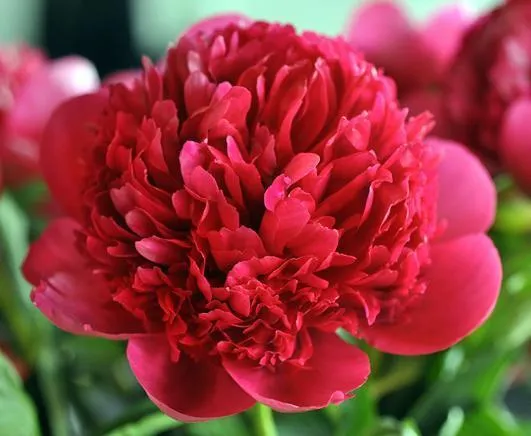
Climate Requirements
Belgravia Peonies thrive in temperate climates. They require a period of winter chill to bloom successfully in spring. Ideally, they are suited to USDA hardiness zones 3 to 8.
Soil Preferences
These peonies prefer well-draining, fertile soil with a neutral to slightly acidic pH (6.5 to 7.0). Adding organic matter such as compost can enhance soil fertility and structure.
Sunlight Needs
Belgravia Peonies flourish in full sun, requiring at least 6 to 8 hours of direct sunlight daily. While they can tolerate partial shade, insufficient sunlight may lead to reduced blooming.
Planting Belgravia Peony
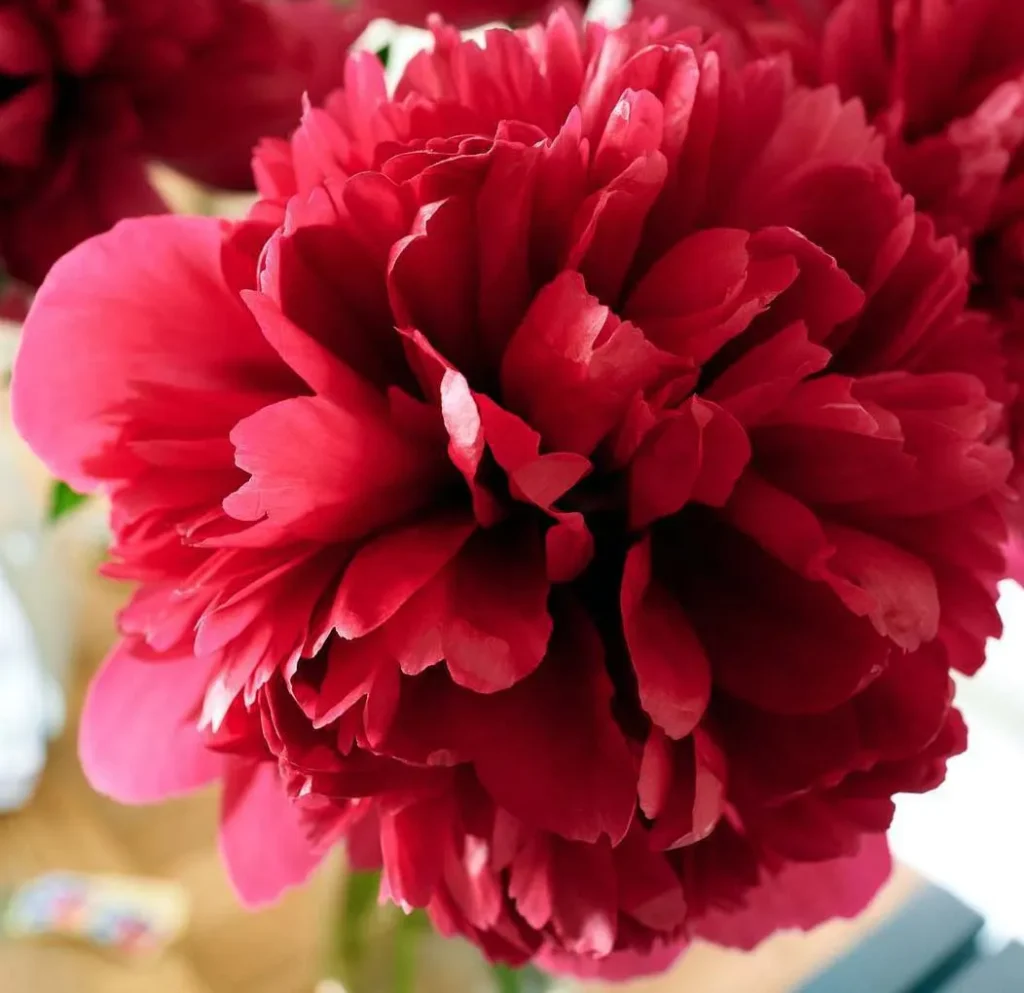
When to Plant Belgravia Peony
The best time to plant Belgravia Peonies is in the fall, typically between September and October. This allows the plants to establish their root systems before winter dormancy.
Choosing the Right Location
Select a location with ample sunlight and good air circulation. Avoid areas prone to waterlogging, as this can lead to root rot.
Preparing the Soil
Before planting, prepare the soil by removing weeds and debris. Incorporate compost or well-rotted manure to enrich the soil. Ensure the planting hole is deep and wide enough to accommodate the roots without crowding.
Step-by-Step Planting Guide
- Dig the Hole: Dig a hole about 12 to 18 inches deep and wide.
- Position the Root: Place the peony root with the eyes (buds) facing upward, 1 to 2 inches below the soil surface.
- Fill the Hole: Backfill with soil, gently firming it around the roots.
- Water: Water thoroughly to settle the soil and eliminate air pockets.
- Mulch: Apply a layer of mulch to retain moisture and regulate soil temperature.
Caring for Your Belgravia Peony
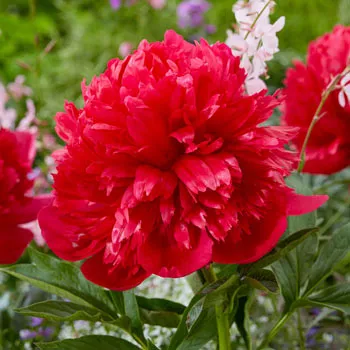
Watering Requirements
Water the peonies regularly during their growing season, ensuring the soil remains moist but not waterlogged. Reduce watering in the fall as the plant enters dormancy.
Fertilizing Schedule
Feed Belgravia Peonies with a balanced, slow-release fertilizer in early spring when new growth appears. Avoid high-nitrogen fertilizers, which can lead to excessive foliage at the expense of blooms.
Mulching Tips
Apply mulch around the base of the plant to retain soil moisture, suppress weeds, and protect the roots from temperature extremes. Use organic mulch such as straw, bark chips, or compost.
Pruning Techniques
Prune the peonies in late fall after the foliage has died back. Cut stems back to ground level to prepare the plant for winter. Remove any dead or diseased stems throughout the growing season to promote healthy growth.
Seasonal Care for Belgravia Peony
Spring Care
In spring, remove winter mulch and apply a balanced fertilizer. Ensure the plant receives adequate water and watch for early signs of pests or diseases.
Summer Care
Continue regular watering, especially during dry spells. Support the stems with stakes or rings if the blooms are heavy. Deadhead spent flowers to encourage more blooms.
Fall Care
Reduce watering as temperatures drop. Apply mulch after the first frost to protect the roots from winter cold.
Winter Care
Belgravia Peonies require minimal care in winter. Ensure they are well-mulched and protected from extreme cold and drying winds.
Expert tips to Growing Peonies from Seeds
Propagating Belgravia Peony
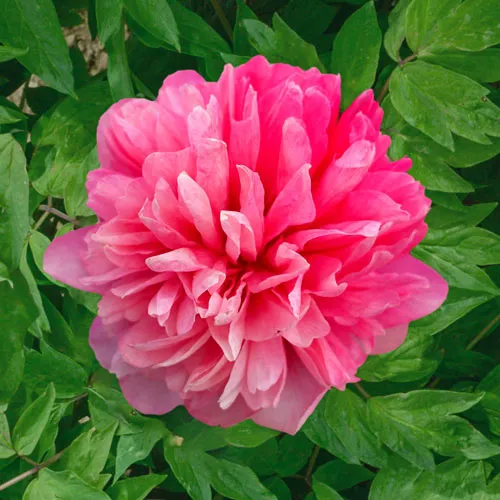
Belgravia Peonies can be propagated through division, seeds, or stem cuttings. Division is the most common and reliable method.
Division
Divide peonies in the fall every 5 to 10 years to rejuvenate the plant and encourage blooming. Carefully dig up the plant, divide the root clump into sections, each with at least 3 to 5 eyes, and replant immediately.
Seed Propagation
While possible, seed propagation is slow and can take several years for plants to bloom. Collect seeds in late summer, stratify them in moist soil over winter, and plant in the spring.
Stem Cuttings
Stem cuttings are less common but can be successful. Take cuttings in early summer, treat with rooting hormone, and plant in a well-draining medium.
Common Pests and Diseases
Identifying Common Pests
Belgravia Peonies can be affected by pests such as aphids, thrips, and scale insects. Regular inspection and early intervention can prevent infestations.
Preventing and Treating Diseases
Common diseases include botrytis blight, powdery mildew, and root rot. Ensure proper spacing, avoid overhead watering, and use fungicides as needed.
Organic Pest Control Methods
Use neem oil, insecticidal soap, or companion planting to deter pests. Encouraging beneficial insects such as ladybugs can help control aphid populations.
Troubleshooting Common Problems
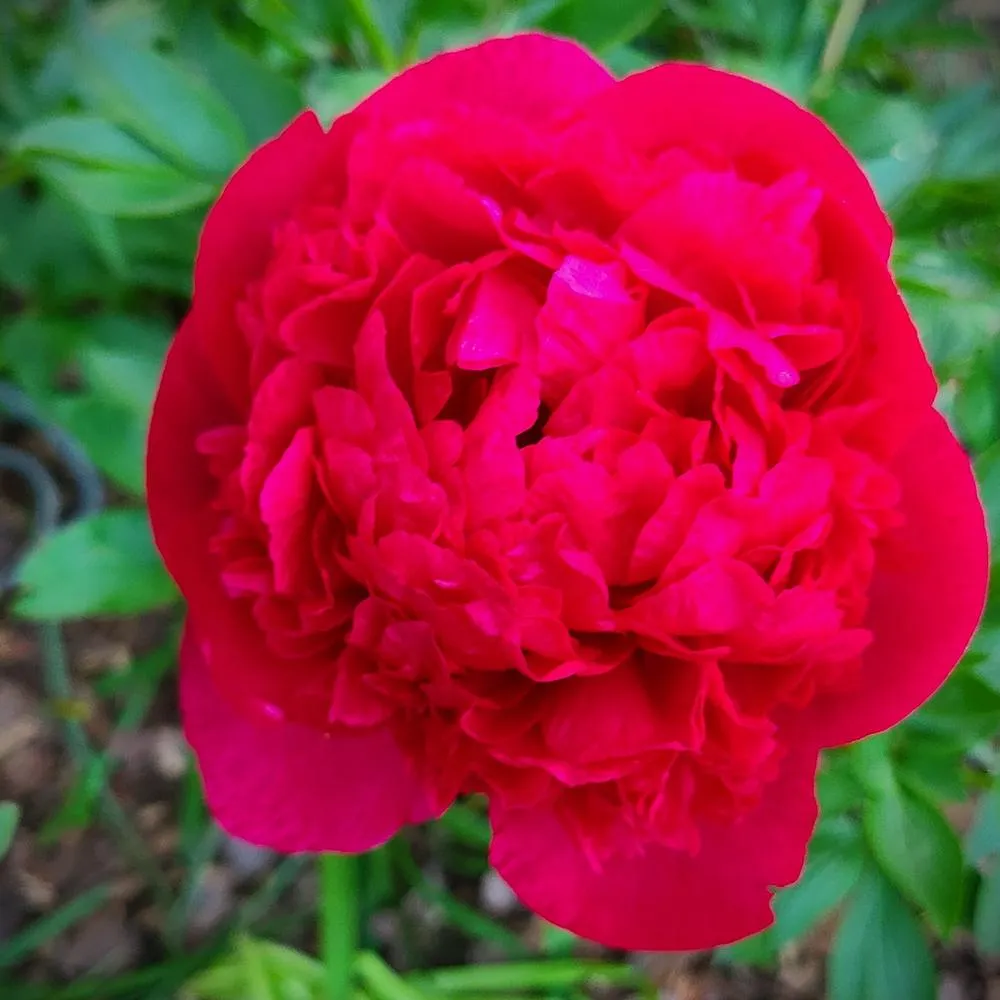
Yellowing Leaves
Yellowing leaves can indicate overwatering, nutrient deficiencies, or root issues. Check soil moisture, adjust watering, and consider a soil test to diagnose nutrient imbalances.
Wilting Plants
Wilting can result from underwatering, heat stress, or root diseases. Ensure consistent watering and inspect roots for signs of rot or pest damage.
Poor Flowering
Poor flowering may be due to insufficient sunlight, overcrowding, or lack of nutrients. Ensure plants receive adequate light, are properly spaced, and are fertilized appropriately.
Conclusion
The Belgravia Peony is a magnificent addition to any garden, offering beauty, resilience, and a range of varieties. With proper care, these plants can thrive and bloom profusely for many years. Whether you are a seasoned gardener or a beginner, growing Belgravia Peonies can be a rewarding experience. Their stunning flowers and easy maintenance make them a must-have for any garden enthusiast.
FAQs How to Grow and Care for Belgravia Peony
How do I plant Belgravia Peony bulbs?
To plant Belgravia Peony bulbs, choose a sunny spot with well-drained soil. Dig a hole about 2-3 inches deep, place the bulb with the eyes facing up, and cover it with soil. Space bulbs 18-24 inches apart to allow for growth. Water thoroughly after planting.
What is the best way to care for Belgravia Peony plants?
Belgravia Peonies require minimal care. Water them regularly, especially during dry periods, but avoid overwatering. Apply a balanced fertilizer in early spring and mulch to retain moisture. Support the plants with stakes if needed to prevent them from drooping.
When should I cut back Belgravia Peonies?
Cut back Belgravia Peonies in late fall after the foliage has died back. Remove dead stems and leaves to prevent disease and pests. Avoid cutting back too early, as the foliage helps the plant store energy for next year’s blooms.
